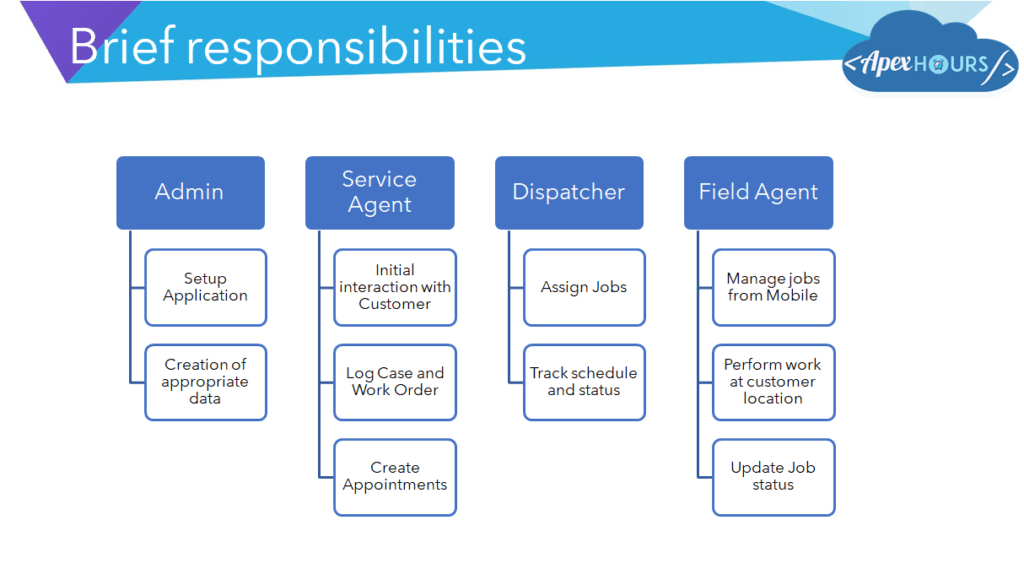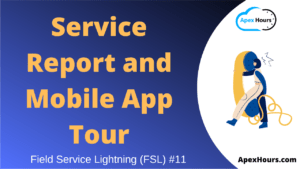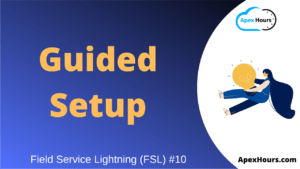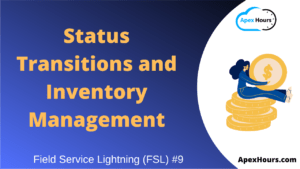In this post, we will learn about Salesforce Field Service (FSL). If you are curious about how this entire process works or what’s required for it to be set up, then you must check this post. We discussed all about Salesforce Field Service Lightning (FSL) including its licensing requirements, understanding the personas involved, learning how to set up Field Service Lightning, and understanding its objects and it’s data model along with their significance. And all of this using a demonstrative approach!
If you are new and want to learn Salesforce Field Service Lightning (FSL) check out our Free Training. Let’s start our Guide to Salesforce Field Service (FSL).
What is Salesforce Field Service Lightning?
Salesforce Field Service Lightning (FSL), as you might know, is a Salesforce product that connects customers, the workforce, and products on a single platform to deliver exceptional on-site services. It also provides the customer support team a chance to intelligently delegate work to Field Service technicians and monitor them constantly. It enables them to handle customers’ records and data in the field from within Salesforce.
FSL allows us to bring together three important elements of a Business that provide on-field service.
- Customers
- Products
- Workforce
Features of Salesforce Field Service Lightning
Let’s see the features of FSL in Salesforce. The features of FSL in Salesforce are as follows:
- The Service Team will receive the accurate time schedule based on the customer’s availability. This helps to manage the travel time and work schedule accordingly.
- The software recognizes the ability of an individual technician and assigns the task appropriately. This helps in Customer satisfaction.
- The electronic signature facility is provided by FSL while accepting the work request as well as acknowledging the service.
- Supervisors can effortlessly manage the technicians’ service through a map view or Gantt graph.
- Administrators can configure and manage the work structure, service guidelines, and basic requirements through the software.
These are some features that are mentioned, let’s take a deep dive into FSL and understand its data model and how it works.
Supported Editions and pricing
The Field Service Lightning core features, managed package, and mobile app are available in following editions of Salesforce
- Enterprise
- Performance
- Unlimited
- Developer
How does a Field Technician work?
- Get a job assigned
- Collect the details required
- Collect parts/repair material required for the job.
- Finish the job and log it.
- Get a confirmation from the customer
- Get Paid!
- Go back and update the job status
How does an In-office Agent work?
- Collect work orders.
- Assign Jobs
- Provide required information( customer info, address, time of availability) to the Technician/Field Agent.
- Provide parts/repair material required for the job.
- Update the job status once completed.

Salesforce Field Service Lightning Key players
| Role | Description |
| Administrator | Setup field service features according to their unique business needs. This includes installing the Field Service Lightning managed package and the Field Service Lightning mobile app. |
| Agent | Takes customer service calls and requests field service appointments via work orders, which list the skills and parts that are needed. |
| Dispatcher | Assigns and manages the service appointments. The dispatcher console included in the managed package helps dispatchers schedule, optimize, and dispatch service appointments from one screen. |
| Mobile Worker or Technician | Manages their service appointments. Their tasks include closing work orders, tracking the parts they used, and providing service reports. |
Capabilities to help Field Agent/Technician
- Manage jobs from Mobile devices.
- Customer info, product info, and job info are all available in one place on mobile.
- Knowledge articles to provide faster and better resolution to the customers
Capabilities to help Service Agent/Dispatcher
- Collect detailed information.
- Dispatching Jobs and shipments.
- Track status, location, and inventory.
- Service Reports to help provide better status to the Customer and management
Roles and capabilities
| Admins and Agents can. ( using Core Field Service Lightning ) | Dispatchers can ( using Field Service Lightning Managed Package ) | Field agents/technicians can (using Field Service Lightning Mobile App) |
| •Set operating hours, skill sets, and standard appointment requirements unique to your organization •Enable the Salesforce app to provide mobile access to your mobile workforce •Track inventory and van stock so your mobile workforce has what they need when they’re at a customer site •Report and analyse field service data •Plan, perform, and track all your field service work, from installations to repairs and maintenance | •Optimize the schedule according to your organization’s scheduling policies •Get a bird’s-eye view of appointment lists, scheduling actions, a resource availability chart, and an interactive map in the dispatcher console •Integrate and maintain scheduling policies, global actions, sharing tools, and optimization rules with the administration app | •View their appointment schedule •Use Salesforce data to check on work orders, reach contacts, and verify addresses •Create and edit records to log work and create follow-up appointments •Use Chatter to collaborate with other mobile workers, managers, and dispatchers •Track updates with push notifications •View Knowledge articles to complete tricky tasks •Track van stock and inventory consumed to complete jobs |

A typical process for a Work Order

The Core Data Model of FSL


Work orders represent work to be completed for our customers.
They are the main element for field service operations in Salesforce.
Work Order line items are subtasks for various other purposes such as tracking
Key Objects and their significance
- Service Appointment: Object to store an appointment with details of Work Order.
- Skills: Required skills to perform field tasks
- Service Territories: Object-to-store territories where Field agents are available to work.
- Work Type: Templates for common field service work, such as cable installations or furnace repairs
- Service Resources: Mobile employees who can perform field service work
- Operating Hours: Times when field service work can be performed for service territories, service resources, and customer accounts
- Product Items: Parts or services that can be requested, required, transferred, and consumed in field service work
- Product Requests: Stores all the Requests for a part or parts.
- Time Sheets: Tools to track the time your field service employees are spending on tasks
- Product Requests: Stores all the Requests for a part or parts.
- Service Report Templates Templates for customer-facing reports summarizing the status of service appointment and work orders
Installing and Setting up Field Service Lightning
Let’s see how to install and setup FSL in Salesforce.
- Enable Field Service Lightning from Setup
- Install Field Service Lightning Managed Package app from AppExchange ( Note – Package cannot be installed without enabling FSL in the Setup)
- You will have two Apps installed after these steps –
- Field Service Admin
- Field Service

Field Service Lightning Demo
Check our Field Service Lightning video to check the demo.
Further learning
Please Subscribe to our YouTube channel to get notification for upcoming recording.
If you are new in Salesforce. Please check our free Salesforce Admin and Salesforce Developer training.






Hello, I appreciate the content, must say life saviour.
I have a query being a newbie in FSL, say we have a requirement of filtering assets from work orders based on any parameters say account, contact anything, What should be the approach to achieve this.
Thanks in advance
Can we set up the start location as Home address abs end location as office address for individual field agent?
I cannot tell you how helpful this is!!!! I was super under pressure for a client request and was having a hard time figuring out the process so the visuals are incredibly helpful. THANK YOU.
Thank you so much for your kind words. Its means alot for me.
Thanks,
Amit Chaudhary
I read your article it is very informative for me. I hope I will find more articles in the future.
Thanks for the information for the All About Field Service Lightning l read your article l am very impressive
Thanks for your feedback
Hi Amit, thank you so much for your article. I’m implementing SFS in a large company in USA and I’m wondering if you have found any issues deploying Field Service Components using change sets.
Thanks for your information. i am read your article i am very impressive.
Glad you like it, Check our our free training on YouTube too
Thanks ,This information is very helpful for everyone
Hi Amit, such a great content. Now, there is a Service Field Plus. Can you explain the difference between the Field Service Standard vs Service Plus? (My org has the FSL standard, Dispatcher, Mobile, scheduling and Maps; however, they want to acquire Service Plus and Technician licenses. The technician can not work using the Mobile licenses? and what are the features from this new Service +?